 |
 |
Our enthusiastic and extremely knowledgeable perennials team is here to answer your questions and help you choose the best perennials for your situation. There’s always something in bloom for sun, shade, butterflies, birds or deer resistance as well as a variety of bulbs for your space.
Stroll through our time-tested favorites and introduce yourself to the newest varieties. We garden with perennials too; we love them and it shows!
|
58 found, showing page 1 of 4
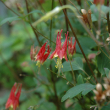
Unique, drooping flowers emerge in late spring. Bright-red outer petals contrasted by yellow filaments. USDA 3-8
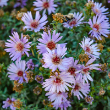
Height: 12 inches
Spread: 18 inches
Sunlight: full sun, partial shade
Hardiness Zone: 3a
Other Names: Michaelmas Daisy
Description:
Mounds of narrow, dark green foliage are covered with sky-blue daisy-like flowers, adding a pop of color to autumn days; dwarf compact habit, ideal for patio containers, borders or garden beds; beautiful added to fresh cut arrangements; low maintenance
Ornamental Features:
Woods Blue Aster has masses of beautiful sky blue daisy flowers with yellow eyes at the ends of the stems from early to late fall, which are most effective when planted in groupings. The flowers are excellent for cutting. Its narrow leaves remain dark green in color throughout the season.
Landscape Attributes:
Woods Blue Aster is a dense herbaceous perennial with a mounded form. Its relatively fine texture sets it apart from other garden plants with less refined foliage.
This is a relatively low maintenance plant, and is best cleaned up in early spring before it resumes active growth for the season. It is a good choice for attracting butterflies to your yard, but is not particularly attractive to deer who tend to leave it alone in favor of tastier treats. Gardeners should be aware of the following characteristic(s) that may warrant special consideration;
-Disease
Woods Blue Aster is recommended for the following landscape applications:
- Mass Planting
- General Garden Use
- Container Planting
- Planting & Growing
Woods Blue Aster will grow to be about 12 inches tall at maturity, with a spread of 18 inches. Its foliage tends to remain dense right to the ground, not requiring facer plants in front. It grows at a medium rate, and under ideal conditions can be expected to live for approximately 10 years. As an herbaceous perennial, this plant will usually die back to the crown each winter, and will regrow from the base each spring. Be careful not to disturb the crown in late winter when it may not be readily seen!
This plant does best in full sun to partial shade. It prefers to grow in average to moist conditions, and shouldn't be allowed to dry out. It is not particular as to soil type or pH. It is somewhat tolerant of urban pollution. This particular variety is an interspecific hybrid. It can be propagated by division; however, as a cultivated variety, be aware that it may be subject to certain restrictions or prohibitions on propagation.
Woods Blue Aster is a fine choice for the garden, but it is also a good selection for planting in outdoor pots and containers. It is often used as a 'filler' in the 'spiller-thriller-filler' container combination, providing a mass of flowers against which the thriller plants stand out. Note that when growing plants in outdoor containers and baskets, they may require more frequent waterings than they would in the yard or garden.

Famed for its resistance to disease, 'Wood's Purple' is a compact aster with bluish-purple flowers that sport cheerful yellow centers. Deep green foliage stays healthy and lush throughout the season on this hardy and long-lasting plant. Daisy-shaped blooms provide important late-season food for many pollinators, including migrating monarch butterflies
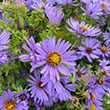
Height: 24 inches
Spread: 24 inches
Sunlight: full sun partial shade
Hardiness Zone: 4a
Other Names: Michaelmas Daisy
Description:
A mounded, bushy variety, perfect for adding color to fall gardens; beautiful sky blue daisy-like flowers with yellow centers are featured on green, fragrant foliage; easy to grow, requiring little to no maintenance; drought tolerant once established
Ornamental Features:
October Skies Aster has masses of beautiful sky blue daisy flowers with yellow eyes at the ends of the stems from early to late fall, which are most effective when planted in groupings. The flowers are excellent for cutting. Its narrow leaves remain dark green in color throughout the season.
Landscape Attributes:
October Skies Aster is a dense herbaceous perennial with a mounded form. Its relatively fine texture sets it apart from other garden plants with less refined foliage.
This is a relatively low maintenance plant, and is best cleaned up in early spring before it resumes active growth for the season. It is a good choice for attracting butterflies to your yard, but is not particularly attractive to deer who tend to leave it alone in favor of tastier treats. Gardeners should be aware of the following characteristic(s) that may warrant special consideration: Disease
October Skies Aster is recommended for the following landscape applications:
- Mass Planting
- General Garden Use
- Container Planting
Planting & Growing:
October Skies Aster will grow to be about 24 inches tall at maturity, with a spread of 24 inches. Its foliage tends to remain dense right to the ground, not requiring facer plants in front. It grows at a medium rate, and under ideal conditions can be expected to live for approximately 10 years. As an herbaceous perennial, this plant will usually die back to the crown each winter, and will regrow from the base each spring. Be careful not to disturb the crown in late winter when it may not be readily seen!
This plant does best in full sun to partial shade. It prefers to grow in average to moist conditions, and shouldn't be allowed to dry out. It is not particular as to soil type or pH. It is somewhat tolerant of urban pollution. This is a selection of a native North American species. It can be propagated by division; however, as a cultivated variety, be aware that it may be subject to certain restrictions or prohibitions on propagation.
October Skies Aster is a fine choice for the garden, but it is also a good selection for planting in outdoor pots and containers. It can be used either as 'filler' or as a 'thriller' in the 'spiller-thriller-filler' container combination, depending on the height and form of the other plants used in the container planting. It is even sizeable enough that it can be grown alone in a suitable container. Note that when growing plants in outdoor containers and baskets, they may require more frequent waterings than they would in the yard or garden.
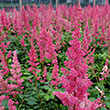
Magenta blooms. tolerates deer, heavy shade, & black walnut. USDA 3-8
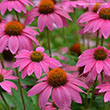
Plant Height: 18 inches
Flower Height: 24 inches
Spread: 18 inches
Sunlight: full sun
Hardiness Zone: 3a
Other Names: Pow Wow Wild Berry Coneflower
Description:
This stunning echinacea produces large purple-pink flowers with coppery centers; a perfect choice for planting in groups, along border edges, or in containers; great for flower arrangements, attracts pollinators
Ornamental Features:
PowWow Wild Berry Coneflower has masses of beautiful lightly-scented hot pink daisy flowers with coppery-bronze eyes at the ends of the stems from mid summer to early fall, which are most effective when planted in groupings. The flowers are excellent for cutting. Its pointy leaves remain green in color throughout the season.
Landscape Attributes:
PowWow Wild Berry Coneflower is an herbaceous perennial with an upright spreading habit of growth. Its medium texture blends into the garden, but can always be balanced by a couple of finer or coarser plants for an effective composition.
This is a relatively low maintenance plant, and is best cleaned up in early spring before it resumes active growth for the season. It is a good choice for attracting birds and butterflies to your yard, but is not particularly attractive to deer who tend to leave it alone in favor of tastier treats. It has no significant negative characteristics.
PowWow Wild Berry Coneflower is recommended for the following landscape applications:
- Mass Planting
- General Garden Use
- Container Planting
Planting & Growing:
PowWow Wild Berry Coneflower will grow to be about 18 inches tall at maturity extending to 24 inches tall with the flowers, with a spread of 18 inches. It grows at a medium rate, and under ideal conditions can be expected to live for approximately 10 years. As an herbaceous perennial, this plant will usually die back to the crown each winter, and will regrow from the base each spring. Be careful not to disturb the crown in late winter when it may not be readily seen!
This plant should only be grown in full sunlight. It is very adaptable to both dry and moist locations, and should do just fine under typical garden conditions. It is considered to be drought-tolerant, and thus makes an ideal choice for a low-water garden or xeriscape application. It is not particular as to soil type or pH. It is highly tolerant of urban pollution and will even thrive in inner city environments. This is a selection of a native North American species. It can be propagated by division; however, as a cultivated variety, be aware that it may be subject to certain restrictions or prohibitions on propagation.
PowWow Wild Berry Coneflower is a fine choice for the garden, but it is also a good selection for planting in outdoor pots and containers. With its upright habit of growth, it is best suited for use as a 'thriller' in the 'spiller-thriller-filler' container combination; plant it near the center of the pot, surrounded by smaller plants and those that spill over the edges. Note that when growing plants in outdoor containers and baskets, they may require more frequent waterings than they would in the yard or garden.

Plant Height: 18 inches
Flower Height: 24 inches
Spread: 18 inches
Sunlight: full sun
Hardiness Zone: 3a
Other Names: Pow Wow Wild Berry Coneflower
Description:
This stunning echinacea produces large purple-pink flowers with coppery centers; a perfect choice for planting in groups, along border edges, or in containers; great for flower arrangements, attracts pollinators
Ornamental Features:
PowWow Wild Berry Coneflower has masses of beautiful lightly-scented hot pink daisy flowers with coppery-bronze eyes at the ends of the stems from mid summer to early fall, which are most effective when planted in groupings. The flowers are excellent for cutting. Its pointy leaves remain green in color throughout the season.
Landscape Attributes:
PowWow Wild Berry Coneflower is an herbaceous perennial with an upright spreading habit of growth. Its medium texture blends into the garden, but can always be balanced by a couple of finer or coarser plants for an effective composition.
This is a relatively low maintenance plant, and is best cleaned up in early spring before it resumes active growth for the season. It is a good choice for attracting birds and butterflies to your yard, but is not particularly attractive to deer who tend to leave it alone in favor of tastier treats. It has no significant negative characteristics.
PowWow Wild Berry Coneflower is recommended for the following landscape applications:
- Mass Planting
- General Garden Use
- Container Planting
Planting & Growing:
PowWow Wild Berry Coneflower will grow to be about 18 inches tall at maturity extending to 24 inches tall with the flowers, with a spread of 18 inches. It grows at a medium rate, and under ideal conditions can be expected to live for approximately 10 years. As an herbaceous perennial, this plant will usually die back to the crown each winter, and will regrow from the base each spring. Be careful not to disturb the crown in late winter when it may not be readily seen!
This plant should only be grown in full sunlight. It is very adaptable to both dry and moist locations, and should do just fine under typical garden conditions. It is considered to be drought-tolerant, and thus makes an ideal choice for a low-water garden or xeriscape application. It is not particular as to soil type or pH. It is highly tolerant of urban pollution and will even thrive in inner city environments. This is a selection of a native North American species. It can be propagated by division; however, as a cultivated variety, be aware that it may be subject to certain restrictions or prohibitions on propagation.
PowWow Wild Berry Coneflower is a fine choice for the garden, but it is also a good selection for planting in outdoor pots and containers. With its upright habit of growth, it is best suited for use as a 'thriller' in the 'spiller-thriller-filler' container combination; plant it near the center of the pot, surrounded by smaller plants and those that spill over the edges. Note that when growing plants in outdoor containers and baskets, they may require more frequent waterings than they would in the yard or garden.
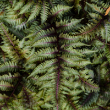
Height: 18 inches
Spread: 24 inches
Sunlight: partial shade, full shade
Hardiness Zone: 3a
Other Names: Crested Japanese Painted Fern
Description:
An excellent choice for adding fine textures to garden beds and borders; features a low growing habit with arching grey green fronds with silver variegations and deep red midribs; easy to grow, requiring little to no maintenance; shade loving variety
Ornamental Features:
Japanese Painted Fern is primarily valued in the garden for its cascading habit of growth. Its attractive ferny bipinnately compound leaves emerge deep purple in spring, turning grayish green in color with showy silver variegation throughout the season. The burgundy stems are very colorful and add to the overall interest of the plant.
Landscape Attributes:
Japanese Painted Fern is a dense herbaceous fern with a shapely form and gracefully arching fronds. It brings an extremely fine and delicate texture to the garden composition and should be used to full effect.
This is a relatively low maintenance plant, and usually looks its best without pruning, although it will tolerate pruning. Deer don't particularly care for this plant and will usually leave it alone in favor of tastier treats. It has no significant negative characteristics.
Japanese Painted Fern is recommended for the following landscape applications:
- Mass Planting
- Border Edging
- General Garden Use
- Groundcover
- Naturalizing And Woodland Gardens
Planting & Growing:
Japanese Painted Fern will grow to be about 18 inches tall at maturity, with a spread of 24 inches. Its foliage tends to remain dense right to the ground, not requiring facer plants in front. It grows at a slow rate, and under ideal conditions can be expected to live for approximately 15 years. As an herbaceous perennial, this plant will usually die back to the crown each winter, and will regrow from the base each spring. Be careful not to disturb the crown in late winter when it may not be readily seen!
This plant does best in partial shade to shade. It prefers to grow in moist to wet soil, and will even tolerate some standing water. It is particular about its soil conditions, with a strong preference for rich, acidic soils. It is somewhat tolerant of urban pollution, and will benefit from being planted in a relatively sheltered location. Consider applying a thick mulch around the root zone over the growing season to conserve soil moisture. This is a selected variety of a species not originally from North America, and parts of it are known to be toxic to humans and animals, so care should be exercised in planting it around children and pets. It can be propagated by division; however, as a cultivated variety, be aware that it may be subject to certain restrictions or prohibitions on propagation.
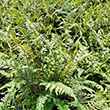
Height: 18 inches
Spread: 24 inches
Sunlight: partial shade, full shade
Hardiness Zone: 3a
Other Names: Crested Japanese Painted Fern
Description:
An excellent choice for adding fine textures to garden beds and borders; features a low growing habit with arching grey green fronds with silver variegations and deep red midribs; easy to grow, requiring little to no maintenance; shade loving variety
Ornamental Features:
Japanese Painted Fern is primarily valued in the garden for its cascading habit of growth. Its attractive ferny bipinnately compound leaves emerge deep purple in spring, turning grayish green in color with showy silver variegation throughout the season. The burgundy stems are very colorful and add to the overall interest of the plant.
Landscape Attributes:
Japanese Painted Fern is a dense herbaceous fern with a shapely form and gracefully arching fronds. It brings an extremely fine and delicate texture to the garden composition and should be used to full effect.
This is a relatively low maintenance plant, and usually looks its best without pruning, although it will tolerate pruning. Deer don't particularly care for this plant and will usually leave it alone in favor of tastier treats. It has no significant negative characteristics.
Japanese Painted Fern is recommended for the following landscape applications:
- Mass Planting
- Border Edging
- General Garden Use
- Groundcover
- Naturalizing And Woodland Gardens
Planting & Growing:
Japanese Painted Fern will grow to be about 18 inches tall at maturity, with a spread of 24 inches. Its foliage tends to remain dense right to the ground, not requiring facer plants in front. It grows at a slow rate, and under ideal conditions can be expected to live for approximately 15 years. As an herbaceous perennial, this plant will usually die back to the crown each winter, and will regrow from the base each spring. Be careful not to disturb the crown in late winter when it may not be readily seen!
This plant does best in partial shade to shade. It prefers to grow in moist to wet soil, and will even tolerate some standing water. It is particular about its soil conditions, with a strong preference for rich, acidic soils. It is somewhat tolerant of urban pollution, and will benefit from being planted in a relatively sheltered location. Consider applying a thick mulch around the root zone over the growing season to conserve soil moisture. This is a selected variety of a species not originally from North America, and parts of it are known to be toxic to humans and animals, so care should be exercised in planting it around children and pets. It can be propagated by division; however, as a cultivated variety, be aware that it may be subject to certain restrictions or prohibitions on propagation.
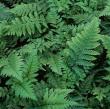
Grayish-green, deeply cut, leathery fronds. Easily grown in average, medium, well-drained soil. USDA 3-8
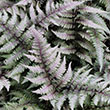
Striking, silvery-green foliage with blue tones. Large, clumping variety. USDA 3-8

Pink blooms. Self-seeding groundcover. Tolerates clay. USDA 3-8
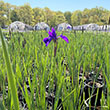
Purple flowers bloom above the narrow green leaves. Naturalizing. USDA 3-8

Height: 3 feet
Spacing: 30 inches
Sunlight: full sun
Hardiness Zone: 2a
Ornamental Features:
Shirley Temple Peony features bold lightly-scented white cup-shaped flowers with shell pink overtones and pink centers at the ends of the stems from late spring to early summer. The flowers are excellent for cutting. Its compound leaves remain green in color throughout the season.
Landscape Attributes:
Shirley Temple Peony is an herbaceous perennial with a more or less rounded form. Its medium texture blends into the garden, but can always be balanced by a couple of finer or coarser plants for an effective composition.
This is a relatively low maintenance plant, and should be cut back in late fall in preparation for winter. Deer don't particularly care for this plant and will usually leave it alone in favor of tastier treats. Gardeners should be aware of the following characteristic(s) that may warrant special consideration:
- Disease
Shirley Temple Peony is recommended for the following landscape applications:
- Mass Planting
- General Garden Use
Planting & Growing:
Shirley Temple Peony will grow to be about 30 inches tall at maturity, with a spread of 3 feet. When grown in masses or used as a bedding plant, individual plants should be spaced approximately 30 inches apart. The flower stalks can be weak and so it may require staking in exposed sites or excessively rich soils. It grows at a slow rate, and under ideal conditions can be expected to live for approximately 20 years. As an herbaceous perennial, this plant will usually die back to the crown each winter, and will regrow from the base each spring. Be careful not to disturb the crown in late winter when it may not be readily seen!
This plant should only be grown in full sunlight. It prefers to grow in average to moist conditions, and shouldn't be allowed to dry out. It is not particular as to soil pH, but grows best in rich soils. It is somewhat tolerant of urban pollution. This particular variety is an interspecific hybrid. It can be propagated by division; however, as a cultivated variety, be aware that it may be subject to certain restrictions or prohibitions on propagation.

Height: 3 feet
Spacing: 30 inches
Sunlight: full sun
Hardiness Zone: 2a
Ornamental Features:
Karl Rosenfeld Peony features bold lightly-scented fuchsia flowers with yellow anthers at the ends of the stems from late spring to early summer. The flowers are excellent for cutting. Its compound leaves remain green in color throughout the season.
Landscape Attributes:
Karl Rosenfeld Peony is an herbaceous perennial with a more or less rounded form. Its medium texture blends into the garden, but can always be balanced by a couple of finer or coarser plants for an effective composition.
This is a relatively low maintenance plant, and should be cut back in late fall in preparation for winter. Deer don't particularly care for this plant and will usually leave it alone in favor of tastier treats. Gardeners should be aware of the following characteristic(s) that may warrant special consideration:
- Disease
Karl Rosenfeld Peony is recommended for the following landscape applications:
- Mass Planting
- General Garden Use
Planting & Growing:
Karl Rosenfeld Peony will grow to be about 30 inches tall at maturity, with a spread of 3 feet. When grown in masses or used as a bedding plant, individual plants should be spaced approximately 30 inches apart. The flower stalks can be weak and so it may require staking in exposed sites or excessively rich soils. It grows at a slow rate, and under ideal conditions can be expected to live for approximately 20 years. As an herbaceous perennial, this plant will usually die back to the crown each winter, and will regrow from the base each spring. Be careful not to disturb the crown in late winter when it may not be readily seen!
This plant should only be grown in full sunlight. It prefers to grow in average to moist conditions, and shouldn't be allowed to dry out. It is not particular as to soil pH, but grows best in rich soils. It is somewhat tolerant of urban pollution. This particular variety is an interspecific hybrid. It can be propagated by division; however, as a cultivated variety, be aware that it may be subject to certain restrictions or prohibitions on propagation.
58 found, showing page 1 of 4














